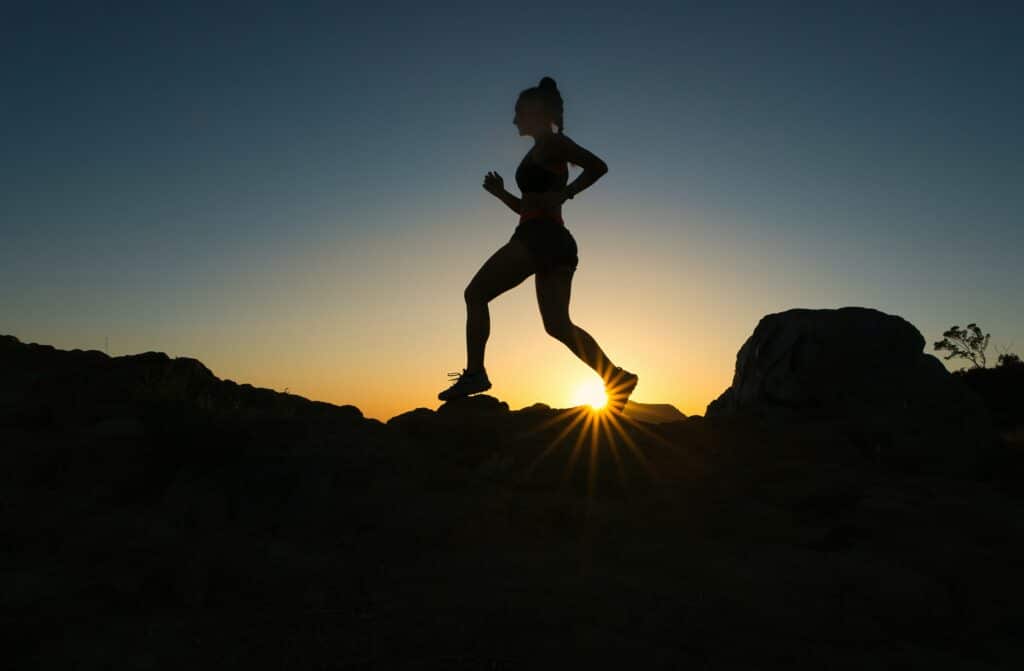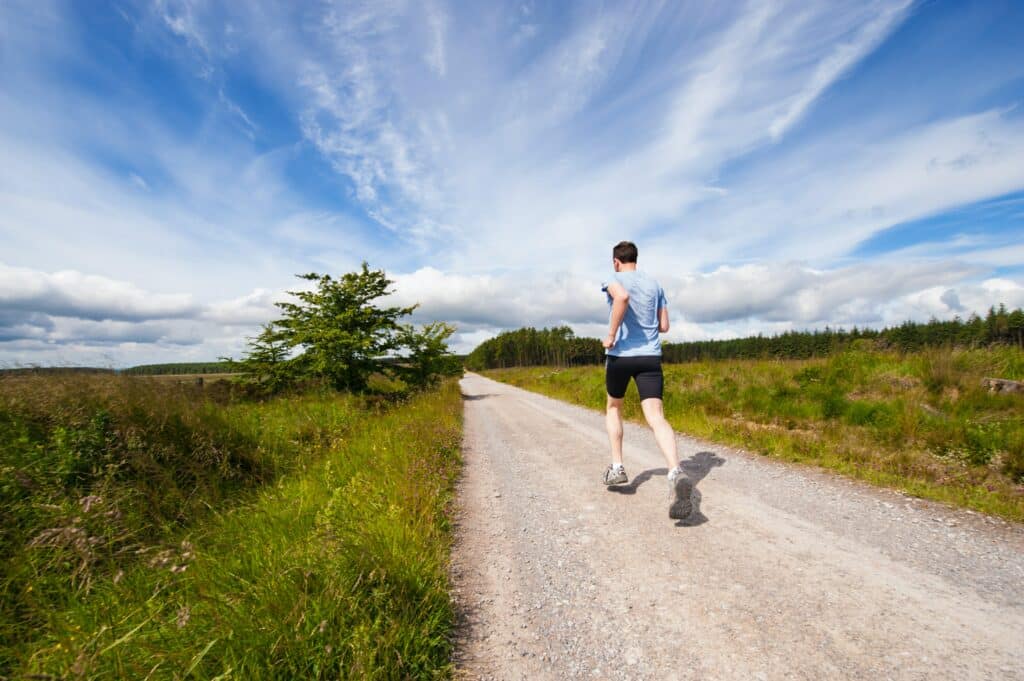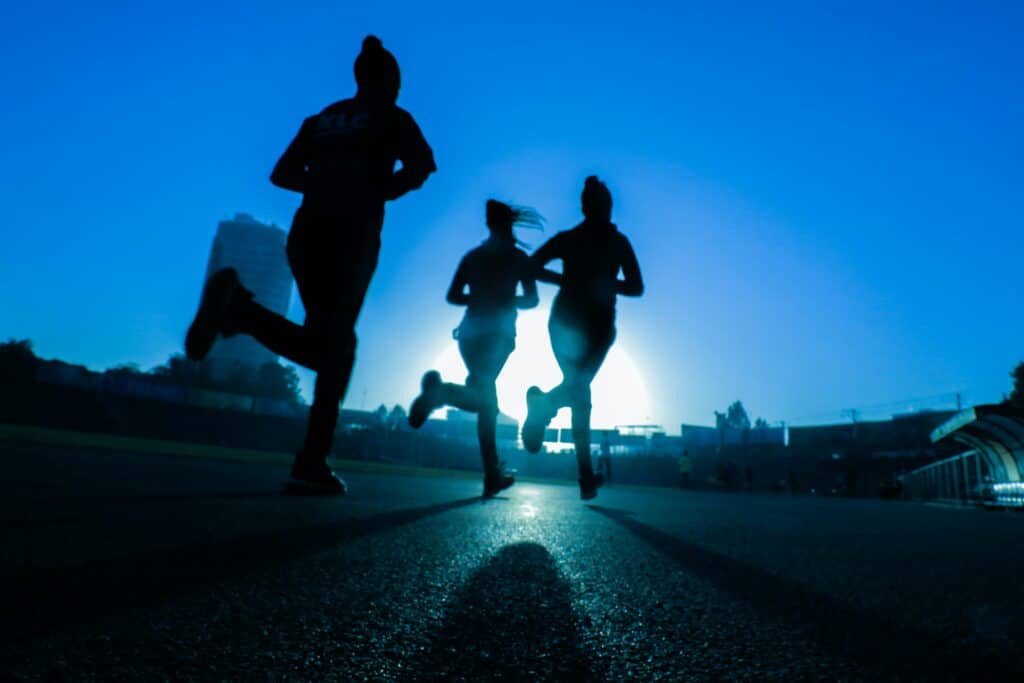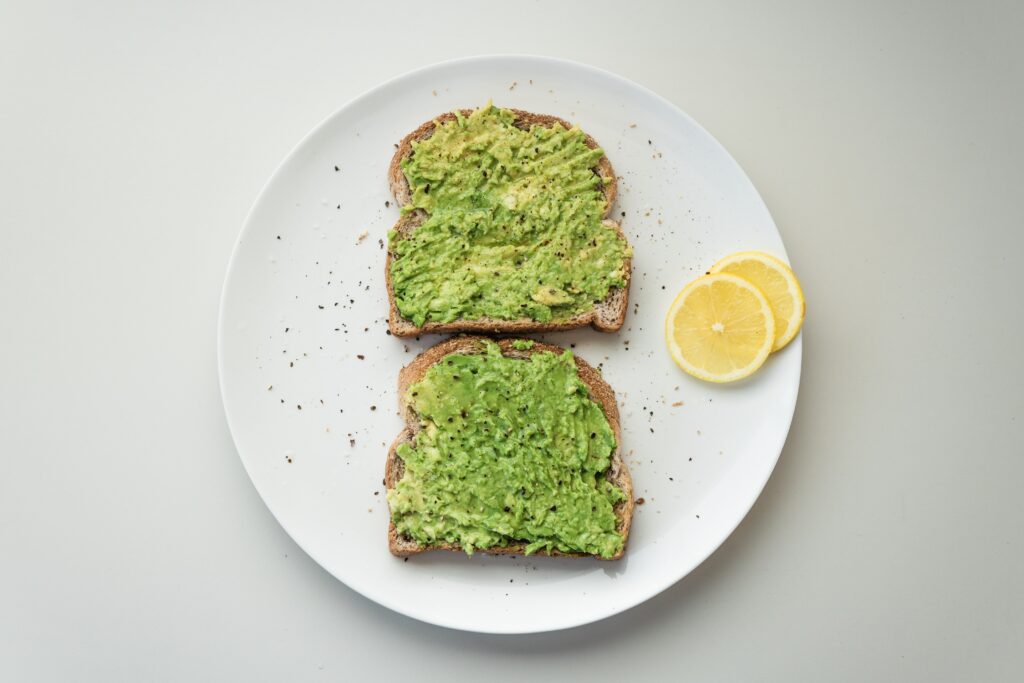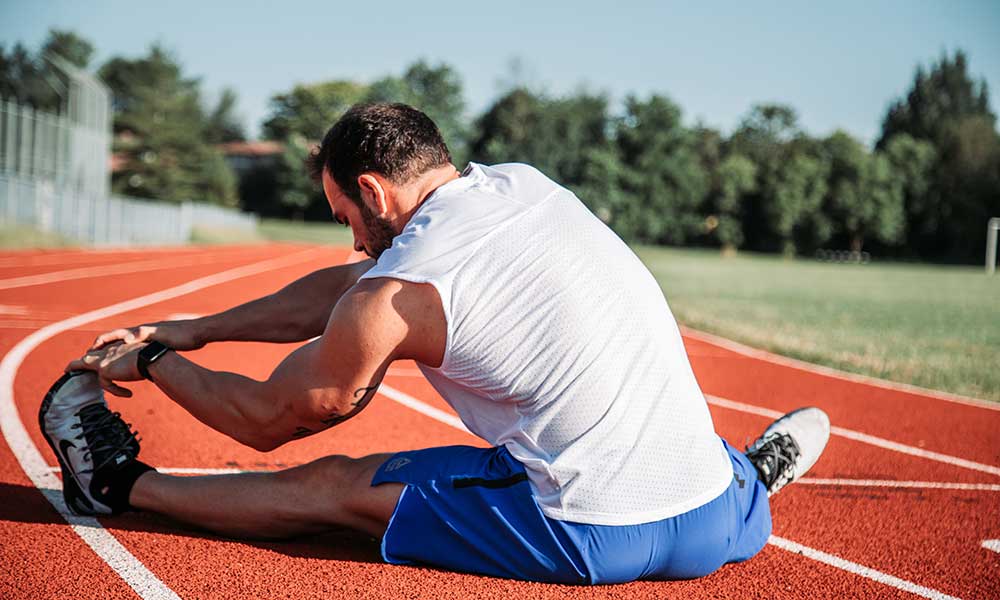The simple answer is an emphatic, “Yes!” The physical advantages to adding the trail to your running routine are many, even just once a week. Trail running is a great way to build all the different muscles of your legs, including tendons and ligaments, as well as increasing core strength and arguably the most important muscle in the body—the heart. And, of course, it is a great aerobic exercise.
Trail running will help to build and grow these muscles. You likely won’t see as much of a bulky gain in muscle, rather more definition. Muscle growth is an important element of your everyday life, not just for your exercise goals. It helps to reduce back pain, increase balance and prevent injury.
In addition to growing your leg muscles, trail running will lead to burning more calories. As you work your way through all the different terrains of a trail, you create micro-tears in your muscle fibers, which, as they heal, grow your muscles. During that recovery time, you are also burning calories to repair those tears, long after your run has finished.
What Muscles Does Trail Running Target?
Quads
The quadriceps is comprised of four muscles on the front of your thigh—astus intermedius, vastus medialis, vastus lateralis, and rectus femoris. Your quads are what keep you moving forward as you extend your knee. In trail running, your quads are what helps you brake as you go downhill.
Calves
Your calf is made up of the gastrocnemius and soleus muscles. These form the Achilles tendon. Your calves are critical in how your foot lands and providing shock absorption, providing ankle support and stability, and are the muscles that help you push off the ground to get moving forward. As you climb steep hills, you will notice a burn in your calves.
The strength of your ankles is also critical as you run on uneven terrain, or hop from rock to rock. The good shape of your calves and ankles can make a huge difference in preventing injury.
Glutes
Your glute muscles are found in your butt and are involved in a lot of the important movements in your body and for providing stability. You will engage your glutes to propel yourself. The stronger your glutes, the faster you can accelerate on your runs, and they help provide that spring when your jumping from rocks, or climbing that tough terrain.
In addition to this, they also help support the movement of your pelvis and hips, and contribute to the distribution of support in your body. Thus, stronger glutes can also contribute to a healthier back.
Core
Your core is aptly named as it is the center of everything. During your trail running exercises, you will be activating many core muscles, but mainly your abs and obliques—which are the muscles to the side of your abs. A trail runner will often have a six pack because of the amount of time engaging their core muscles and building that core strength.
As you run on that trail, negotiating uneven terrain, climbing steep hills, or running downhill, your core muscles keep your upper body tight and supported so all the muscles in your legs can do their work correctly and smoothly.
Heart
Trail running and road running is great for your cardiovascular endurance and strength. As you run, over time, the walls of your heart will become stronger. A strong heart helps to lower your resting heart rate and get more oxygen into your blood.
It is important, too, to pay attention to your heart, especially if you have any medical concerns or conditions. It may be a good idea to check in with your medical professional to set limits for yourself. There are heart rate monitors that pair to watches and smart phones as you run to keep close tabs on your heart rate and set maximum limits.
Is Trail Running Good For Building Muscle?
Trail running is a fantastic way to build muscle. In addition to cardiovascular strength, trail running provides a great workout for your quads, calves, glutes and core. You will build and tone these muscles as you negotiate uneven terrain, climb hills, run downhill or hop from rocks.
Trail running will build muscle but also will provide you with muscular endurance. As you make your way in the fresh air through mountain trails or across the rolling hills you will engage your muscles for long periods of time. Each time you get out on your running trails, you will notice that you are able to go a little stronger and farther.
You will notice much more muscle definition throughout your leg muscles, but if it’s bulk you’re looking for, you may need to add some strength training as well.
Does Trail Running Make Your Legs Bigger?
If you’re starting your trail running career from nothing, you will definitely notice a change in your leg muscles. Your muscles will get bigger and more toned.
An experienced road runner will notice more muscle definition in their calves and quads after adding the trails into their running routes.
If you are hoping for big, muscular legs, trail running is only one element of your workout. You will need to employ targeted strength training to make your legs bigger and more muscular. You may want to find a personal trainer that can help to create a plan to achieve the gains you want and reach your trail running goals as well as provide you with important training tips to remember while you’re out there on the trails.
Does Trail Running Make Your Butt Bigger?
Trail running will tighten and tone your butt, or glutes. This provides the strength to propel you forward, help you accelerate, and give you that spring.
For beginning trail runners, their butts will change shape and become tighter and more muscular. Running or hiking up those steep hills will grow those butt muscles, much like squats or deadlifts, but if it’s bulk you’re looking for you will want to add targeted strength training into your routine as well.
Is Trail Running A Good Workout?
Trail running is an incredible way to meet your workout goals, burn calories, engage a lot of different muscles, and generally feel better.
As you run the trail, you are strengthening many different muscle groups—quads, glutes, core, calves—as well as increasing your cardiovascular fitness.
Many people find themselves bored by road running, or report that it actually causes them a lot of pain so they’re hesitant to begin trail running. Trails are much easier on your joints as dirt, wood chip and gravel—natural surfaces—are far more forgiving surfaces unlike asphalt and cement. You will find yourself in less pain than running on the hard surfaces of the road. And this will lead to a shorter recovery time.
Trail running also engages your mind as you look to work your way through obstacles, uneven or rocky terrain. There is always something to do on your trail run, whether it’s figuring out where to place your next footstep or get yourself to the peak of the hill, or the act of stopping and looking over the terrain you’ve covered and letting that wave of accomplishment and natural beauty sweep over you.
Possibly one of the best reasons to run on a trail is to put yourself into a natural location, away from the noise and pollution. Many of us work high pressure jobs in busy cities and use workouts to disconnect. Running on the hard ground through the city or suburban streets surrounded by cars and houses doesn’t quite provide the necessary disconnection.
Trail running through the countryside or on your mountain trail gives your mind an escape from the busyness and noisiness of the day to day, quell those negative thoughts, and puts you in a setting to breathe fresh, clean air and reconnect to the beauty of the natural world.
Conclusion
The great benefits of trail running just keep on going and going. It’s not only great for your body, it’s great for your mind. You will exercise more muscles than you even knew you had.
It will help raise your overall fitness levels, reduce stress, build strength and bring you closer to your health goals. With all of the incredible benefits of trail running there’s no reason to add this to your weekly fitness routine.



